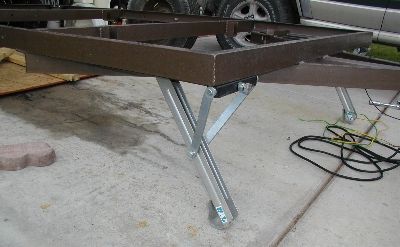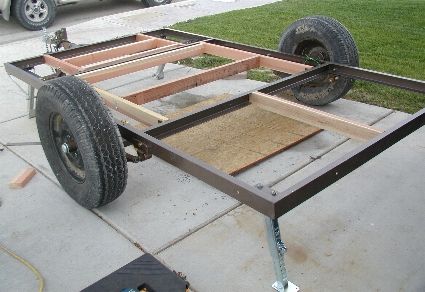Juneaudave wrote:Geeee....after all this....I'm a thinking Dean got more answers than he bargained for!!!

Dean oughta know by now that any subject discussed on this board can and will be over-discussed!
cracker39 wrote:Guy, for a tear, you're probably right. At least as far as tipping goes. But, my comments regarding those tire levelers is that although they level the trailer, when you get in it, that could change as the trailer could still have some vertical movement on the springs/torsion arms if the chassis is not stabilized. Safe, yes, but stable? Not. I like mine to be rock solid when I am in it. You don't want the neighbors to know what you're doing in there do you??? .
I like to have the stabilzers (Atwoods, mounted at rear corrners) down too, because the leveling will change a bit once you get in. Though I'd have to really be rockin' the boat so to speak to get the trailer to move much even without the jacks.
Like someone else mentioned, the Atwoods don't have a great ratcheting mechanism. They are rated for 650 lbs. lifting and 1,000 lbs. holding capacity (each), but I find that they are insufficient for lifting the weight of my trailer if I need to go so far as to lift one tire all the way off the ground when side-to side leveling. It won't quite "catch" all the way when you push the metal lifting rod all the way down, and you need it to catch there in order to take it out and insert and do more lifting. I can use them to lift the rear a bit while there is still some weight on the tires. In most cases, that's all I need to do.
But when on a seriously uneven site, like some others on this thread, I use the following method: 1) lower the tongue, 2) unfold and drop the stabilizers (and try to adjust for side-to-side leveling, 3) raise tongue, 4) curse when side-to-side isn't right, and 5) repeat at #1.
Rik


 If I put a Bal jack at the back two corners (underneath the galley end) and use the tongue jack as the third leg, what does the door have to do with the tripod arrangement?
If I put a Bal jack at the back two corners (underneath the galley end) and use the tongue jack as the third leg, what does the door have to do with the tripod arrangement?  Is there any reason those three "legs" wouldn't be able to support/stabilize/level/jack up the tear?
Is there any reason those three "legs" wouldn't be able to support/stabilize/level/jack up the tear?
 A point well taken too! Thanks for the tip. I'll put it in my tip file.........and believe me, I have one. So-o-o-o............what you are saying is I need some sort of stabilization at all four corners.
A point well taken too! Thanks for the tip. I'll put it in my tip file.........and believe me, I have one. So-o-o-o............what you are saying is I need some sort of stabilization at all four corners. 



